


xxxxxThe American poet Henry Wadsworth Longfellow is best remembered today for his ballad The Wreck of the Hesperus, his narrative poem The Song of Hiawatha, produced in 1855, and his Tales of a Wayside Inn, a collection of stories which included his famous Paul Revere’s Ride. He was Professor of Modern Languages at Harvard University for some twenty years (1835-
HENRY WADSWORTH LONGFELLOW
1807 -
Acknowledgements
Longfellow: 1850s, artist unknown – Digital Gallery, New York Public Library, USA. Whittier: lithograph by Armstrong and Co, Boston Massachusetts, 1887 – Prints and Photographs Division, Library of Congress, Washington. Amesbury: from The Life of John Leafgreen Whittier by the American author William Sloan Kennedy (1850-
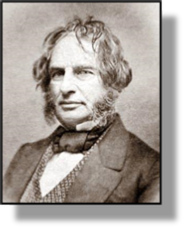 xxxxxHenry Wadsworth Longfellow, the most celebrated and influential American poet of the 19th century, is best remembered today for his ballad The Wreck of the Hesperus, his narrative poem The Song of Hiawatha produced in 1855, and his Tales of a Wayside Inn, published in 1863. This string of stories, modelled loosely on Chaucer’s Canterbury Tales, included his famous Paul Revere’s Ride, an embellished account of the legendary “midnight ride”, made to give warning of the British advance on Concord at the beginning of the American War of Independence.
xxxxxHenry Wadsworth Longfellow, the most celebrated and influential American poet of the 19th century, is best remembered today for his ballad The Wreck of the Hesperus, his narrative poem The Song of Hiawatha produced in 1855, and his Tales of a Wayside Inn, published in 1863. This string of stories, modelled loosely on Chaucer’s Canterbury Tales, included his famous Paul Revere’s Ride, an embellished account of the legendary “midnight ride”, made to give warning of the British advance on Concord at the beginning of the American War of Independence.
xxxxxLongfellow was born in Portland, Maine, and in 1825, after completing his education at Portand Academy and Bowdoin College, Brunswick, he travelled widely in Europe to study various languages. On his return in 1829 he was a teacher and librarian at Bowdoin College before becoming Professor of Modern Languages at Harvard University in 1835. It was while at Harvard that he gained public recognition with his first volume of verse entitled Voices of the Night, produced in 1839, and he followed this two years later with his Ballads and Other Poems, a highly successful work which included The Wreck of the Hesperus, The Village Blacksmith, and Excelsior. And also to his time at Harvard belonged Evangeline, the first of his long narrative poems. This sentimental tale of two lovers, separated when the British take over the French colony of Acadia, virtually swept the nation. Then soon after leaving Harvard in 1854 came his two other lengthy poems The Song of Hiawatha of 1855 and, three years later, The Courtship of Miles Standish, a work which sold over 15,000 copies within the first week of its publication.
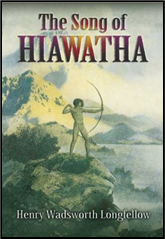
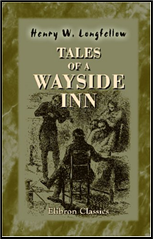 xxxxxThe popularity of Longfellow’s poetic work owed much to the uncomplicated nature of its subject matter and a quality of verse which, by its simplicity, gentleness and romantic vision, created a melody as memorable as that of a familiar song. Though highly popular in its time, the childlike nature of his easy, satisfying rhythm later came under attack, as did his general lack of imagination and his tendency to moralize. But though some critics came to regard his work as commonplace and superficial, it is that very simplicity of theme and melodic verse that have kept him in the forefront of American poets. His sonnets and other lyrics rank high among his nation’s poetry, his lines are full of magical expression, and works like Evangeline, Hiawatha and Paul Revere’s Ride have remained part of his country’s heritage.
xxxxxThe popularity of Longfellow’s poetic work owed much to the uncomplicated nature of its subject matter and a quality of verse which, by its simplicity, gentleness and romantic vision, created a melody as memorable as that of a familiar song. Though highly popular in its time, the childlike nature of his easy, satisfying rhythm later came under attack, as did his general lack of imagination and his tendency to moralize. But though some critics came to regard his work as commonplace and superficial, it is that very simplicity of theme and melodic verse that have kept him in the forefront of American poets. His sonnets and other lyrics rank high among his nation’s poetry, his lines are full of magical expression, and works like Evangeline, Hiawatha and Paul Revere’s Ride have remained part of his country’s heritage.
xxxxxAmong his other works was an account of his early travels entitled Outre-
xxxxxLongfellow made a number of visits to Europe during his career and these helped to widen interest in American literature. While in England he made the acquaintance of Charles Dickens and Alfred Tennyson, had tea with Queen Victoria, and received honorary degrees from both Oxford and Cambridge. Elsewhere he was made a member of the Spanish Academy and the Russian Academy of Sciences. The Hungarian composer Franz Liszt, whom he met in Rome, set music to his opening of The Golden Legend, a work founded on a German poem. At home, he was a life-
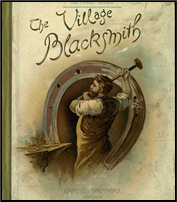 xxxxxA gentle, kindly man by nature, with a genuine interest in
xxxxxA gentle, kindly man by nature, with a genuine interest in 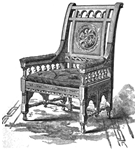 people, he was extremely popular both at home and abroad, and did much to awaken a love of poetry among the young. His 70th birthday was celebrated throughout America, and on his 72nd birthday, the children of Cambridge (where Harvard is situated) collected money in order to have a special chair made for the poet. It was constructed out of the chestnut tree in Brattle Street which had featured in his poem A Village Blacksmith (“Under a spreading chestnut tree”) and had had to be cut down for road widening. And we are told that some time in the 1850s the Chinese government presented him with a fan on which was inscribed the words of his poem The Psalm of Life. Such was the extent of his fame.
people, he was extremely popular both at home and abroad, and did much to awaken a love of poetry among the young. His 70th birthday was celebrated throughout America, and on his 72nd birthday, the children of Cambridge (where Harvard is situated) collected money in order to have a special chair made for the poet. It was constructed out of the chestnut tree in Brattle Street which had featured in his poem A Village Blacksmith (“Under a spreading chestnut tree”) and had had to be cut down for road widening. And we are told that some time in the 1850s the Chinese government presented him with a fan on which was inscribed the words of his poem The Psalm of Life. Such was the extent of his fame.
xxxxxIncidentally, Longfellow married twice and both marriages ended in tragedy. His first wife, Mary Storer Potter, died of a miscarriage, aged 22, while they were visiting Rotterdam in 1835. His moving poem Footsteps of Angels was composed in her memory three years later. His second wife, Fanny Appleton, by whom he had six children, was burned to death in 1861 when her dress caught fire while sealing an envelope with wax. Longfellow burnt his hands and face in a vain attempt to save her. Earlier, in 1839, he had based Mary Ashburton, the heroine in his romantic novel Hyperion, upon his 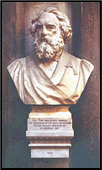 wife Fanny. ……
wife Fanny. ……
xxxxx…… Among the familiar phrases which Longfellow has left with us are “ships that pass in the night”, “the patter of tiny feet”, “I shot an arrow into the air”, and “beneath the spreading chestnut tree”. He was buried in Mount Auburn Cemetery, Cambridge. Two years later a marble bust of him was placed in Poet’s Corner, Westminster Abbey, London, the first American to be honoured in this way.
xxxxxThree extracts of his works are shown below: The Song of Hiawatha, noted in particular for its unusual, sing-
The Song of Hiawatha
Including:
John Greenleaf Whittier

Va-
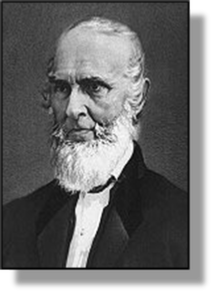 xxxxxWell worthy of a mention here is the American journalist, poet and abolitionist John Greenleaf Whittier (1807-
xxxxxWell worthy of a mention here is the American journalist, poet and abolitionist John Greenleaf Whittier (1807-
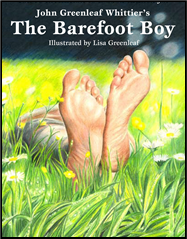
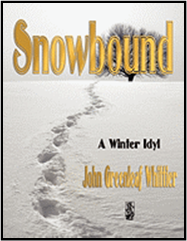 xxxxxIn 1836 he moved to Amesbury in north-
xxxxxIn 1836 he moved to Amesbury in north-
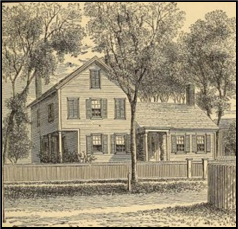 xxxxxIncidentally, Whittier was also concerned in social welfare and took an active part in politics. He served for a time on the Massachusetts legislature, and was one of the founder members of the Liberal Party in 1839, and the Republican Party five years later. ……
xxxxxIncidentally, Whittier was also concerned in social welfare and took an active part in politics. He served for a time on the Massachusetts legislature, and was one of the founder members of the Liberal Party in 1839, and the Republican Party five years later. ……
xxxxx…… A number of his poems were made into hymns and are still sung today. His house in Amesbury, where he composed most of his poems, has been preserved as a museum to his memory. Often referred to as the “Quaker Poet”, the town of Whittier in California was named after him in 1887.
xxxxxAnother American poet who made a name for himself at this time was the journalist and abolitionist John Greenleaf Whittier (1807-
Ye who love the haunts of Nature,
Love the sunshine of the meadow,
Love the shadow of the forest,
Love the wind among the branches
And the rain-
And the rushing of great rivers
Through their palisades of pine-
And the thunder in the mountains,
Whose innumerable echoes
Flap like eagles in their eyries; -
Listen to these wild traditions,
To this Song of Hiawatha.
By the shores of Gitche Gumee,
By the shining Big-
Stood the wigwam of Nokomis,
Daughter of the Moon, Nokomis.
Dark behind it rose the forest,
Rose the black and gloomy pine-
Rose the firs with cones upon them;
Bright before it beat the water,
Beat the clear and sunny water,
Beat the shining Big-
There the wrinkled old Nokomis
Nursed the little Hiawatha.
The Wreck of the Hesperus
At daybreak on the bleak sea beach
A fisherman stood aghast,
To see the form of a maiden fair
Float by on a drifting mast.
The salt was frozen on her breast,
The salt tears in her eyes;
And her streaming hair, like the brown sea-
On the waves did fall and rise.
Such was the wreck of the Hesperus,
In the midnight and the snow!
Oh! save us all from a death like this,
On the reef of “Norman’s Woe”.
The Village Blacksmith
Under a spreading chestnut-
The village smithy stands;
The smith, a mighty man is he,
With large and sinewy hands;
And the muscles of his brawny arms
Are strong as iron bands.
And children coming home from school
Look in at the open door;
They love to see the flaming forge,
And hear the bellows roar,
And catch the burning sparks that fly
Like chaff from the threshing-


